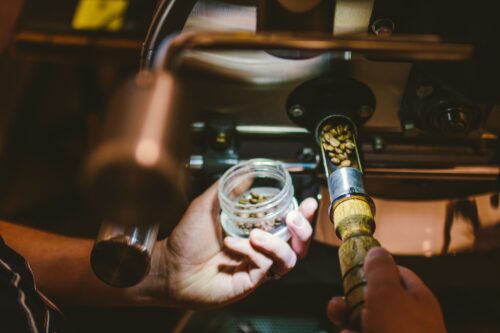One of my friends always likes to highlight the body or mouthfeel of a coffee. In his mind, it’s something that customers can quickly identify, and I’m inclined to agree.
We in the specialty industry tend to lead customers straight to the deep end when we taste. We will discuss the nuances between citrus fruits, identify a particular flower species, or go for the novel and shocking descriptor.
Most of the discussion of flavor notes goes way over their heads. But, with some coaxing and smart examples, most people can get in on the conversation about the body or texture of a coffee.
Defining Texture
Body is defined as a coffee’s weight, texture, and mouthfeel. Body shows up on the Specialty Coffee Association (SCA) cupping form as a characteristic of green coffee, can be altered during brewing, and is often linked to the processing method a coffee goes through on the farm. Something that we as roasters need to consider, however, is that the body of the coffee is greatly affected by the way we roast it.

I want to posit a concept from my roasting handbook: Modulating the Flavor Profile of Coffee: One Roaster’s Manifesto. The idea is that developing body is linked to the Maillard reaction during a roast, specifically, to the formation of melanoidins.
Melanoidins are brown, high molecular weight polymers formed during the Maillard reaction. In their book Espresso: The Science of Quality, Andrea Illy and Rinantonio Viani cite research linking melanoidins with texture. Interestingly enough, there is also a link between molecular weight and viscosity. Essentially, higher molecular weight yields greater viscosity. Therefore, it would stand to reason that more melanoidins—created by the Maillard reaction—would deliver a higher overall molecular weight, leading to a greater viscosity and a sense of weight or thickness as it relates to mouthfeel.
The fantastic thing about this information is that we can—to a degree—control how the Maillard reaction occurs in our roasters by adjusting our profiles. The Maillard reaction begins approximately when you notice the beans change from green (pale green) to yellow in your roaster.
These reactions will continue until the bean runs out of reactants, or you cool the beans by dropping the coffee into the cooling tray or starting the cooling cycle. It may continue a little after depending on your cooling apparatus’s efficiency.

In my experimentation and cuppings, I have noticed that the longer the Maillard reaction is allowed to continue, the greater the experience of the intensity of body (texture, viscosity, thickness). On the other hand, the shorter the time allowed for the Maillard reaction, the weaker the intensity or perception of body.
A Weighty Responsibility
There is, of course, a lot more involved in how this process occurs and how we can control it, which I delve into in the book, but I want to discuss how these ideas may be applied.
First, it is incredible that we have control like this. If you approach coffee roasting and profile development in this manner, you are not bound to one particular expression of body. You can take the coffee and work it to develop your desired texture. It is crucial to note that each coffee has a range in which it can exist and within which you can modulate its attributes, so sourcing is critical, but the bottom line is you have the control.
Second, it is a weighty responsibility. Body is a scoring section on not only the SCA cupping sheet but the Q grader and Cup of Excellence score sheets. These sheets classify the overall quality of green coffee and influence buying and pricing decisions. As roasters, you have control over the expression of the body, so you must always be vigilant in recording your roast data to be fair to the coffee.

A method we use that works well is this: while sample roasting, I record the time of the beginning of color change and note the duration to the end of the roast. That way, I can be informed about the roast’s influence on body after I have cupped the coffee and adjust how I judge it or even decide that a re-roast is necessary.
Take control of your roast. Using the length of the Maillard reaction to control how the intensity of the body presents in the cup is just one of the many ways you can manipulate your coffees. We must strive to be educated, intentional, and meticulous because everything we do will affect the final flavor and quality of the cup.
Photos by Battlecreek Coffee Roasters
Rob Hoos is the head roaster for Nossa Familia Coffee and consults through his company, Rob Hoos Coffee Consulting.














